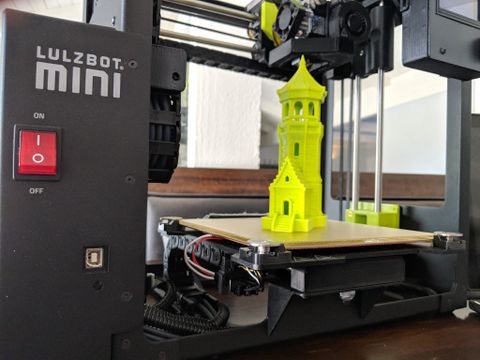
When I first got into 3D printing I made the conscious decision to go cheap. Over the years, I have increased my budget to include printers up to around $1,000, but I've never wanted to go above that. After all, how much better could a $1500 printer be than a $700 one? It turns out it can be a whole lot better.
The LulzBot Mini 2 is quite simply a professional quality desktop printer. With such a small form factor, LulzBot could have been forgiven for cutting corners. Instead, it created a precisely engineered, open source, and feature packed little machine.
This LulzBot Mini 2 was loaned to us for the purposes of the review, and I've been using it for almost a month. It also came with 1 kg of 2.85 mm Polylite PLA from Polymaker that I used all of to create the models you will see in the review.
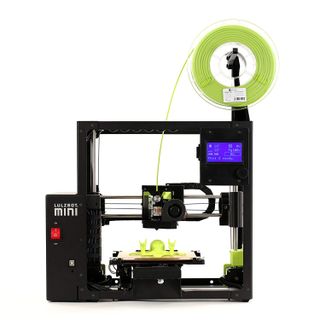
The quality of the prints will surprise you.
For
- Professional printing out of the box
- 0.5 mm nozzle for a variety of applications
- Solid frame
- Excellent printer layout
Against
- Uses its own version of Cura
- The build plate a little small
What you'll like about LulzBot Mini 2
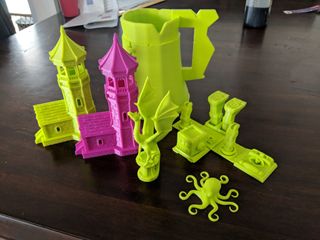
There is a lot to like about the LulzBot Mini 2. From the moment you open the box, you can see the quality of the machine. It comes with everything you need to get started printing, including two sample rolls of PLA, just enough to make the Rocktopus that comes preloaded on the slicer software and to clean the E3D Titan Aero extruder that the Mini 2 comes with. The box even comes with a little tool kit that has all the little things you need like a palette knife, a glue stick, and replacement material for the nozzle scrubber.
Before each print, the printer will move the nozzle to the back of the machine and scrub it over a rough material to clear any debris, then it will use the auto level points on the PEI covered bed to make sure your build surface is perfect. The PEI sheet – a type of yellow plastic that seems to stick PLA and ABS to it like glue, then release it with just a little pressure – is thick with just the right amount of roughness to help the print adhere to the bed. Of all the prints I managed to finish, only one failed due to poor bed adhesion, and a little application of Magigoo fixed that problem on the next go.
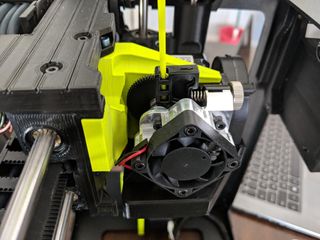
The print quality on the Mini 2 is astounding. I printed prints on this printer at layer heights I would never have believed could produce such good results. The Aero Extruder from E3D with the 0.5 mm nozzle makes light work of even the toughest prints. At 2.5 mm, the tankard I made still feels smoother than prints I have done on other printers at 0.15 mm. At 0.15 mm, the Mini 2 produced beautiful details that I simply cannot reproduce on any of my current machines, no matter how much I tweak the settings.
The print quality on the Mini 2 is astounding.
The rigid frame on the Mini 2, coupled with the open source Marlin firmware and open source 3D printed parts, all meld together perfectly to make a machine you can fix on the fly if you need to. There are plenty of parts on the Mini 2 that are printed by other LulzBot printers at the factory, like the clamps for the smooth rods and the vents for the cooling fan, and while they are clearly printed roughly at a layer height of 3 mm or above, the strength in each piece is apparent in the solidness of each part.
One last little thing I adore about the Mini 2 is the placement of the buttons, toggles, and switches. Far too often on 3D printers, the power button is on the back, the SD card reader is small and cheap, and the LCD panel can be in an odd position to use. The Mini 2 makes none of these mistakes, making everything easily accessible and made from quality components.
What you will not like about LulzBot Mini 2

I am a big fan of open source. I have been an avid Android user from day one and love that the software can be used by anyone for just about anything. The same goes for the 3D printing world and companies like Marlin, who make the LulzBot firmware, and Cura, the slicer of choice for the open source community. The big problem I have though is using the open source software to make your own, branded version.
LulzBot Cura is OK as far as software goes. It does what it needs to do. With its branded logos and branded color, it looks the part as well but with any of these programs comes the same problem: they are never quite as good as the original. The standard version of Cura is the choice for people who don't want to pay for Simplify 3D and is feature-heavy with updates coming almost weekly. But the settings for the LulzBot are absent.
The LulzBot version, on the other hand, is always a few steps behind the standard version, and I just don't understand the need for it except as a branding exercise. Give me the settings for standard Cura. And give me a really good FFF profile for Simplify 3D, the slicer of choice by almost every 3D printing professional. In this way, you promote your open source nature and show the world you want to be used by as many people as possible.
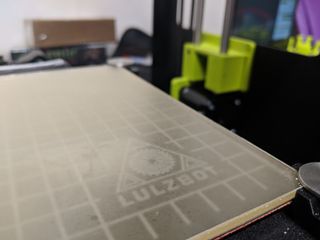
As the name suggests, the Mini 2 is the smallest LulzBot and I understood that the bed was fairly small and it is larger than the Mini 1, but it feels like it could have been bigger than its 160 mm by 160 mm by 180 mm given the size of the housing. This isn't a reason not to buy the Mini 2, especially if it is your first, or only, printer. It's just something that strikes me every time I look at it.
Should you buy the LulzBot Mini 2?
If you are looking for a printer that you can lift out of the box, plug in, and print amazing models, the LulzBot is for you. If you intend to buy only one printer and have it sit on your desk, this is a perfect choice. I am now fully on board with the idea of spending $1,500 on a printer, especially if it produces such good prints with almost no effort.
Whether you are a designer, a cosplayer, or just someone who loves the idea of printing models, the LulzBot is an excellent choice.
James built his first PC when he was 13 and has never looked back. He can be found on Windows Central, usually in the corner where all the 3D printers are, or huddled around the Xbox playing the latest games.
